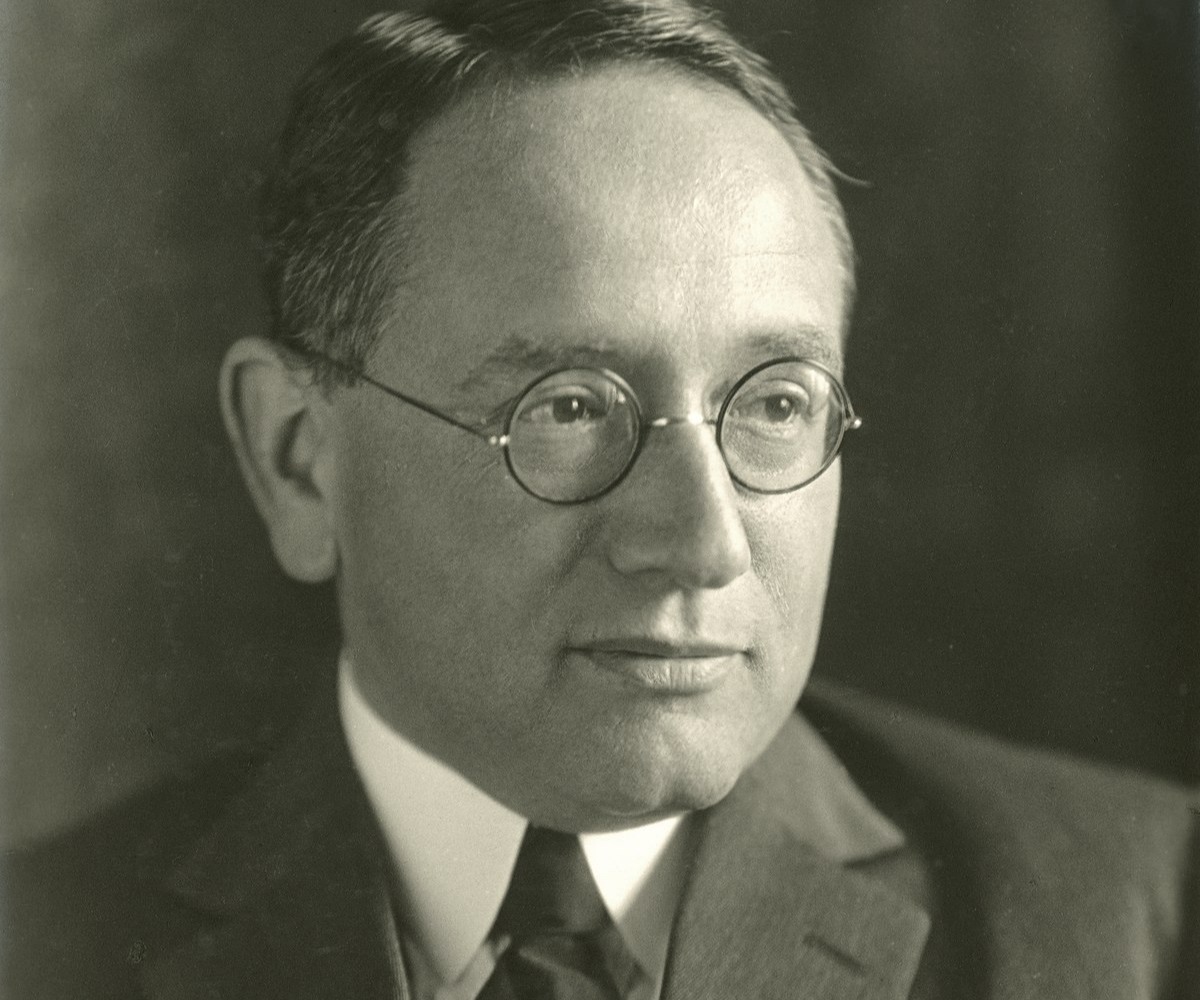
George Pólya, a Hungarian mathematician, is renowned for his profound contributions to the field of mathematics. Born in Budapest in 1887, Pólya’s work has revolutionized problem-solving strategies and has had a lasting impact on the way mathematics is taught and studied today.
In this article, we will uncover 10 astounding facts about George Pólya, shedding light on his notable achievements, influential books, and his dedication to promoting critical thinking and problem-solving skills. From his groundbreaking work on heuristics to his fascinating life as an academic, George Pólya truly left an indelible mark on the world of mathematics.
Key Takeaways:
- George Pólya was a Hungarian mathematician known for his problem-solving techniques, mathematical induction, and contributions to combinatorics, leaving a lasting impact on the field of mathematics.
- Pólya’s emphasis on understanding problems, creative thinking, and logical approaches continues to inspire mathematicians and students, shaping problem-solving methodologies and critical thinking skills across disciplines.
George Pólya was a Hungarian mathematician.
George Pólya, born in Budapest in 1887, was a renowned mathematician known for his significant contributions to various areas of mathematics such as probability theory, mathematical problem-solving, and combinatorics.
Pólya’s work on problem-solving is widely recognized.
One of the most notable aspects of George Pólya’s career was his extensive research and teachings on problem-solving. His book, “How to Solve It,” published in 1945, became a classic and has been widely used as a guide for problem-solving across disciplines.
Pólya emphasized the importance of understanding the problem.
In his problem-solving methodology, Pólya stressed the significance of fully comprehending the problem before attempting to find a solution. He encouraged individuals to carefully analyze and break down the problem into manageable parts, promoting a systematic and logical approach.
Pólya coined the principle of mathematical induction.
George Pólya introduced the concept of mathematical induction, a powerful technique used to prove statements for an infinite set of integers. This principle has found extensive applications in various branches of mathematics, including algebra, number theory, and analysis.
He made significant contributions to combinatorics.
Pólya’s work in combinatorics, the study of counting and arranging objects, has had a lasting impact on the field. His research on enumeration problems and the theory of permutations and combinations has been fundamental in various scientific disciplines.
Pólya was a professor at Stanford University.
After a successful career in Europe, George Pólya moved to the United States and became a professor of mathematics at Stanford University. He continued to make important contributions to the field and mentored numerous students during his tenure.
He encouraged creative thinking in mathematics.
Pólya believed that creativity played a crucial role in mathematics. He emphasized the importance of divergent thinking, encouraging students to explore different approaches and strategies while solving mathematical problems.
Pólya’s work influenced the field of mathematics education.
George Pólya’s research and teachings had a profound impact on mathematics education. His problem-solving framework and emphasis on understanding the concepts behind mathematical processes have influenced curriculum development and instructional practices.
He authored numerous publications.
Pólya was a prolific writer and published over 250 papers during his career. His publications covered diverse areas of mathematics, including probability, number theory, geometry, and mathematical logic.
Pólya’s legacy continues to inspire mathematicians.
The contributions of George Pólya have left a lasting impact on the field of mathematics. His problem-solving techniques, mathematical induction, and emphasis on understanding the problem remain relevant and influential to this day.
Conclusion
George Pólya was a remarkable mathematician whose contributions continue to inspire and influence the field of mathematics. From his groundbreaking work on problem-solving techniques to his extensive research on mathematical education, Pólya’s impact is undeniable. As we have explored in this article, his legacy is built on a foundation of deep understanding, practicality, and creativity. Whether it be through his famous problem-solving principles or his influential publications, Pólya’s ideas have had a lasting effect on mathematics education and the broader academic community.
As we reflect on Pólya’s life, it is evident that his curiosity, innovative thinking, and dedication to improving mathematical education have made him a true icon in the field. The astounding facts we have uncovered here only scratch the surface of his immense contributions. George Pólya’s work is a testament to the transformative power of mathematics and the beauty that can be found in problem-solving.
FAQs
Q: What are some of George Pólya’s most important contributions to mathematics?
A: George Pólya made significant contributions to the field of mathematics, particularly in the area of problem-solving. His problem-solving principles, such as the “Four-Step Process” and the concept of “heuristic reasoning,” have become widely adopted in mathematics education. Pólya also conducted research on mathematical pedagogy and wrote influential books, such as “How to Solve It,” which have had a lasting impact on the teaching and learning of mathematics.
Q: Was George Pólya a renowned mathematician during his lifetime?
A: While George Pólya’s work garnered recognition and respect among his peers, he did not achieve widespread fame during his lifetime. However, his ideas and contributions gained increasing prominence in the years following his death. Today, Pólya is celebrated as one of the most influential mathematicians of the 20th century, and his work continues to be studied and applied in mathematics education around the world.
Q: How did George Pólya approach problem-solving?
A: George Pólya believed that the process of problem-solving involved both creativity and logical thinking. He emphasized the importance of understanding the problem, devising a plan, and continuously reassessing and adapting the approach if necessary. Pólya encouraged students and mathematicians to think heuristically, using general principles and strategies rather than rigid algorithms, to find effective solutions.
Q: What impact did George Pólya have on mathematics education?
A: George Pólya’s influence on mathematics education cannot be overstated. His problem-solving principles and strategies have become cornerstones of math instruction, aiming to develop students’ critical thinking and problem-solving skills. Pólya’s work has shifted the focus from rote memorization to conceptual understanding and the application of mathematical concepts in real-world contexts. His ideas continue to shape the way mathematics is taught, inspiring educators to foster a deeper appreciation for the subject.
Q: Where can I learn more about George Pólya and his work?
A: To learn more about George Pólya and his contributions, you can explore his published works, such as “How to Solve It” and “Mathematics and Plausible Reasoning.” Additionally, various academic journals and online resources delve into Pólya’s theories and their implementation in mathematics education. Universities and educational institutions often offer courses and workshops inspired by Pólya’s problem-solving methods, providing an opportunity to further explore his ideas.
George Pólya's remarkable contributions to mathematics have left an indelible mark on the field. His problem-solving strategies and innovative approaches continue to shape mathematics education and research. Pólya's influence extends beyond the realm of numbers, as his insights into heuristics and decision making have found applications in various domains. Aspiring mathematicians and curious minds alike can find inspiration in Pólya's legacy, which encourages creative thinking and systematic problem-solving.
Was this page helpful?
Our commitment to delivering trustworthy and engaging content is at the heart of what we do. Each fact on our site is contributed by real users like you, bringing a wealth of diverse insights and information. To ensure the highest standards of accuracy and reliability, our dedicated editors meticulously review each submission. This process guarantees that the facts we share are not only fascinating but also credible. Trust in our commitment to quality and authenticity as you explore and learn with us.


